
26 minute read
News Up Front
from REX Sep 2019
by Prime Group
States need to help accelerate infrastructure spending: Tudge
ALAN TUDGE SAYS THE ONUS IS on states to facilitate the acceleration of national infrastructure spending in response to a Reserve Bank push for more action.
Tudge, federal minister for cities, urban infrastructure and population, said the Commonwealth was prepared to provide immediate funding on several key projects included in its $100 billion, 10-year infrastructure plan, but the states need to play ball.
“There are several major projects that have significant funds committed by the federal government, but [to] which state
Tudge (right) says that the Commonwealth was ready to provide funding for key projects but state governments need to “play ball” too.
CREDIT: ALAN TUDGE MP / TWITTER
governments have yet to commit,” Tudge wrote in the Financial Review on July 16. “This includes the huge $4 billion East West Link in Melbourne that would generate 3,700 jobs and finally connect the Eastern Freeway to the other side of town. Our federal commitment would cover the entire government share of funding meaning it will not cost the Victorian government a cent. Let’s get on with it!”
Victorian premier, Daniel Andrews, tore up contracts to build the East West Link with combined government money when he came to power in 2014. Despite continued pressure from the Coalition, the premier maintains the project does not “stack up”, and has refused to support its delivery.
Tudge said the Coalition has faced a similar road block building Roe 8 and 9 highway extensions in Perth. “Finally, over the next 12 months, we want to see each of the 166 Urban Congestion Fund projects either under construction or at least in detailed planning,” he said.
Tudge’s highlighting of projects which have been under state-federal dispute for several years came in response to a call by the Reserve Bank of Australia governor Philip Lowe for the Commonwealth to ensure a war chest of projects are at least ‘shovel ready’ in case the economy slows.
Labor leapt on the RBA chief’s comments, saying they support accelerated funding, and Labor leader Anthony Albanese criticised Tudge’s column for putting the onus on states. “It was very disappointing that this morning, it’s reported that Alan Tudge has actually called for state governments to do more on infrastructure rather than what he has responsibility for,” Albanese told a press conference in Perth on July 16.
“We know in WA here, the McGowan Government is putting record funds into infrastructure through programs like Metronet and other road projects that they’ve put forward. Labor put forward, during the recent federal campaign, an additional $460 million worth of good infrastructure projects over the forward estimates.
“There are a range of projects that could be brought forward, and the government needs to examine them and do more when it comes to infrastructure investment.”
Albo tells farmers they’ve been ignored on Inland Rail
OPPOSITION LEADER ANTHONY Albanese has told a bush summit more should be done to consult farmers before Inland Rail is delivered.
The Labor leader speaking in Dubbo on July 18 said Inland Rail was one example of the sorry state of federal politics, which has left the public crying out for opposing sides to sit down and work on proper solutions. He said people in Australia’s regional areas are rightfully annoyed by how often, and how loudly, they are being told what to think, but how rarely they are listened to. Without naming names, he clearly referenced Bob Brown’s anti-Adani convoy which helped scupper Labor’s hopes in Queensland at the recent federal election. “A convoy of well-meaning protestors travelled up into the heart of Queensland and talked with – or, more accurately, talked at – everyone they met and told them how what they were doing was wrong,” Albanese said. “It went about as well as expected, which is the most polite way I could put it.”
Albanese said Australians everywhere were tired of “the conflict that passes for politics these days”.
“What happens when we don’t listen? What happens when outsiders march in and decide what’s best for locals? What happens is that there’s a good chance they’ll muck it up.” He said the Inland Rail project was one example of regional Australians not being
properly consulted. Before the election he promised to call for an inquiry into the consultation process for Inland Rail, with particular concern over how the alignment will impact farmers in New South Wales.
The Coalition’s victory effectively means the project is likely to go ahead without major review.
But Albanese hasn’t given up. “It’s a great idea,” he said of Inland Rail. “It’s ambitious and it’s overdue. But its planning has been done without appropriate regard to farmers themselves. Who’s going to be thrilled about winding up with their house on one side of the tracks, and their shed on the other? Who’s going to jump for joy about a train that’s going to get their produce almost but not quite all the way to port?”
The Coalition and its Inland Rail team say the consultation process for the project has been, and will continue to be, thorough. But Albanese says an inquiry should go ahead anyway, saying “the project is too important to get wrong”.
CSIRO study to be expanded Meanwhile, a CSIRO study into the benefits o f Inland Rail to farmers and manufacturers has been extended to further convince stakeholders of the benefits of the major project. Infrastructure minister Michael McCormack on July 11 said a CSIRO study

CREDIT: ANTHONY ALBANESE MP / TWITTER

Labor leader, Anthony Albanese.
would be extended to the stretch of Inland Rail between Narromine and Seymour, ahead of industry and community workshops in regional NSW and Victoria.
The same study in March determined cost savings of an average $76 per tonne when it examined the potential for the Parkes to Narromine section of the project.
“The data is clear – Inland Rail is a game-changer,” McCormack said. “In order for Inland Rail to deliver its full benefits, industry and community need to be able to identify and plan for its roll-out.
“That is why we are bringing them to the table early, ensuring we have identified the supply chains – grains, cotton, minerals, meat products, wine and bio-oil among others – that will likely be the biggest beneficiaries ofInland Rail.”
McCormack said the first phase of the CSIRO study between Narromine and Seymour will be followed by a second phase to be rolled out between Narromine and Toowoomba in July 2020.
“The cost-savings announced in the pilot will be an incredible boost for regional Australia – an average saving of $70 million a year for those commodities alone,” he said. “90 per cent of fresh produce sold in our supermarkets is produced here in Australia. The cost savings for farmers – between paddock and port – will be a significant competitive advantage when accessing new domestic and international ma rkets.”
Melbourne-Sydney rail freight on ‘deathbed’
Deputy Prime Minister, Michael McCormack.

Less than one per cent of the 20 million tonnes of palletised and containerised freight between Melbourne and Sydney is now hauled by rail.
PACIFIC NATIONAL CEO DEAN Dalla Valle has called for access charges on the Sydney-Melbourne rail corridor to be abolished to address a substantial competitive advantage enjoyed by road operators along the busy route.
Dalla Valle on July 29 said less than 1 per cent of the 20 million tonnes of palletised and containerised freight transported between Melbourne and Sydney is now hauled by rail.
Pacific National has calculated the access costs of hauling a 20-foot container between Melbourne and Sydney by a freight train as

$94, compared to just $55 for a container on the back of a B-double truck.
“In terms of accessing the freight corridor between Melbourne and Sydney, that’s a massive 70 per cent cost penalty for rail – this rips the guts out of our industry,” Dalla Valle said. This access charge discrepancy, Dalla Valle argues, is because rail charges have been designed to properly reflect the cost of maintaining that infrastructure, while this mechanism is not properly reflected in access charges to truck operators, with the maintenance, repair, and incident costs for roads made whole by taxpayers.
He said without immediate action from the government, road could soon increase its share of Sydney-Melbourne freight to 100 per cent. “Government access charges must be abolished on the rail corridor between the two cities,” Dalla Valle said.
“Bizarrely, at a time when Australians want safer roads, less traffic congestion during their daily commute, reduced vehicle emissions, and properly maintained roads, government policies are geared to rolling out bigger and heavier trucks on more roads. “Australia’s busiest freight corridor by volume has become a conveyor belt of 700,000 B-double equivalent return truck trips each year along the Hume Highway. Now the Hume Highway is fully duplicated, I suspect governments in the future will allow access for even bigger trucks on the freeway, including A-doubles and B-triples.”
Government willing to consider changes Deputy prime minister Michael McCormack told Rail Express on August 1 he had met the day prior with several rail stakeholders, including Pacific National corporate affairs director Andrew Huckel and ARTC boss John Fullerton.
Asked whether the government is willing to consider improving rail’s competitiveness through changes to rail access pricing regimes, McCormack said “it is”.
“I had a great meeting with several rail stakeholders [on July 31],” he said. “We had a very frank discussion about what we could and should do.” McCormack said getting more freight onto rail was “a huge priority” for
the government. “That just makes good sense for safety, for productivity, for supply chain efficiencies, and for lowering costs for all concerned,” he said. “Get more freight onto rail networks, get those supply chains and efficiencies happening; it’s better for productivity, better for getting goods to port and then onto those market opportunities that we’ve opened up.”
Road safety a key factor McCormack added “it stands to reason if you get more trucks off the road, and more freight onto rail, that is going to be safer for road users.” He made his comments on the same day the government agreed to address major road safety concerns. Research conducted by the Australian Automobile Association forecast Australia will not meet almost half the targets set out in the National Road Safety Strategy,
which launched in 2011 with targets for 2020.
In response a new Joint Select Committee on Road Safety will study the government’s current and planned actions aimed at driving down road trauma.
“The Joint Select Committee will thoroughly examine the effectiveness of existing road safety support services and programs, including opportunities to integrate Safe System principles into health, education, industry and transport policy,” McCormack said in a statement. “The committee will also look at the importance of achieving zero deaths and serious injuries across Australia, but especially in remote and regional areas. It will also consider recommendations for the role ofthe newly established Office ofRoad Safety.”

Pacific National CEO, Dean Dalla Valle.
High quality EN 45545-2 approved components and products for the rail industry
Igus e-chains & chain ex cables
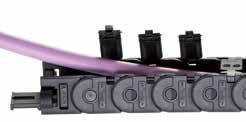
Igus bearings
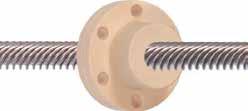

Lapp cable glands Lapp railway cables


Ilme multipin connectors

PMA exible conduits Treotham Automation is the exclusive distributor for many world-class international product lines. As a leader in automation control, Treotham have a broad capacity to provide systems and custom-built solutions using a diverse range of products and components.

Treotham Automation Pty Ltd Sydney, Melbourne, Brisbane, Perth www.treotham.com.au info@treotham.com.au 1300 65 75 64
CONTINUAL TARGETPERFORMANCE COMPARISON

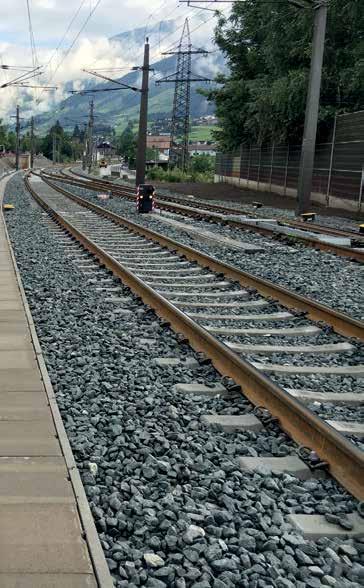

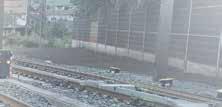


REAL TRACK
VIRTUAL TRACK/DIGITAL TWIN
Digital Twin – the new world of track construction
In the age of 4.0, the digital transformation poses great challenges to the railway: Both, the users’ need for mobility and the operators’ opportunities to manage the track have changed. The digital revolution changes the order of things, requiring us to rethink and change the way we work. The track management of tomorrow will require a multi-dimensional approach, combining design data, measuring results, data models and data on costs and time. We show the way from a divided concept, a model separated by tasks, to an integrated concept, an integrated, holistic approach. Networking infrastructure data with the information on the machine fl eet adds considerable value to track maintenance operations.
Sydney tram testing reaches Circular Quay

Tram testing for Sydney Light Rail in Sydney have started in the CBD.
TRAMS HAVE NOW TRAVELLED all the way along George Street, from Central station to Circular Quay, during testing for the new Sydney Light Rail CBD & South East project.
The first light rail vehicle pulled up at Circular Quay overnight on July 29/30.
It had set off from the Randwick Stabling Yard, passed Central station and travelled the length of George Street beyond Town Hall for the first time, before parking at the new Circular Quay stop. Visiting the stop, which will be the northern terminus of the new light rail line, NSW premier Gladys Berejiklian said she hoped hundreds of thousands of ferry, train and bus commuters would get a good look at the tram while it sat at Circular Quay for the day. “It was an historic moment last night with light rail travelling along the wire-free section on George Street for the first time,” the premier said.
“By the end of the year, this exciting project will be open and those customers will be able to jump on the light rail as part of their daily commute.”
Trams travelled down George Street powered by the “third rail” strip embedded into the ground by construction crews in recent years of work.
The technology, developed by Alstom, is called APS.
APS originally stood for Alimentation Par le Sol – “feeding via the ground” – but has been termed Aesthetic Power Supply for the Sydney project.
APS is designed so power is only supplied to segments of the “third rail” while the light rail vehicle is completely covering them, meaning the technology is safe for pedestrians and motorists.
While the power system is safe for pedestrians, NSW Police assistant commissioner Michael Corby used the Circular Quay milestone to remind people to keep their heads up and be aware around the new light rail corridor.
“We have had a few near misses during the tram testing as people get used to having trams around,” Corby said.
“Mobile phone distraction and people crossing in front of trams are particular dangers. The message for all road users is the same: ditch the distraction, follow the road rules and pay attention.”
The state government is progressively rolling out its safety campaign as testing continues to take place along the route. Motorists are being instructed never to turn in front of a tram, or queue across intersections along the route. Cyclists are being told not to ride along the tracks.
Yarra Trams operations centre to benefit from new tech
THE YARRA TRAMS OPERATION Centre is receiving a new “mega-wall” of information screens that will help controllers monitor real-time data more effectively.
The upgrade will incorporate information such as VicRoads traffic data, CCTV from the tram network and passenger tweets so that it is easily accessible on the screens.
A dedicated station for planned and unplanned disruptions has also been added, allowing controllers to switch to “crisis mode” to quickly and effectively plan tram diversions should incidents such as accidents, protests or traffic occur. The staff at the centre are able to provide advice to drivers and passenger information teams should issues occur.
The upgrades come at a time when Yarra Trams is introducing its newest generation of controllers, who have undergone hundreds of hours of training involving the operations centre, including a five-week program The upgrades come at a time when Yarra Trams is introducing its new generation of controllers.

driving E-Class trams. “These upgrades are just another way we’re improving the reliability of our public transport system – minimising disruptions and improving the passenger experience,” Victorian public transport minister, Melissa Horne, said. “As our city continues to grow, we’re
investing in the latest technology to get people where they need to go as quickly and safely as possible.”
The Yarra Trams Operation Centre monitors more than 5,000 journeys and receives up to 1,800 calls from drivers across Melbourne’s network every day.
Three crossing removals fast-tracked on Frankston line
THE VICTORIAN GOVERNMENT has added three more crossings to the Edithvale-Bonbeach project in Melbourne’s southeast, to reduce overall disruptions on the Frankston line.
Level crossings at Swanpool Avenue, Chelsea Road and Argyle Avenue in Chelsea, 30 kilometres southeast of Melbourne’s CBD, will now be removed at the same time as four other crossings, with completion targeted for 2022.
Overall, the Edithvale to Bonbeach project now means the Frankston line will be lowered into a trench under Edithvale Road in Edithvale, Thames Promenade and Argyle Avenue in Chelsea, and Bondi Road in Bonbeach.
The greater connectivity achieved through this work will allow for the total closure of existing crossings at Swanpool Avenue and

Chelsea Road in Chelsea, and at Lochiel Avenue in Edithvale.
The work also involves building three new modern stations at Edithvale, Chelsea, and Bonbeach.
Construction is expected to begin midway through 2020, with a contract award targeted for early in 2020.
State transport minister, Jacinta Allan, said the work was part of a $3 billion investment in the Frankston line, which includes removing 18 level crossings and building 12 new stations. “Bringing these works forward will mean fewer disruptions for residents, traders, and visitors to Chelsea – plus getting rid of the dangerous dogleg at Chelsea Road will improve congestion and get traffic off local roads,” Allan said.
The Frankston line reopened after eight days, during which the old Carrum station was removed and construction of a temporary track was completed so the line can keep running while work takes place there on a new station and bridge.
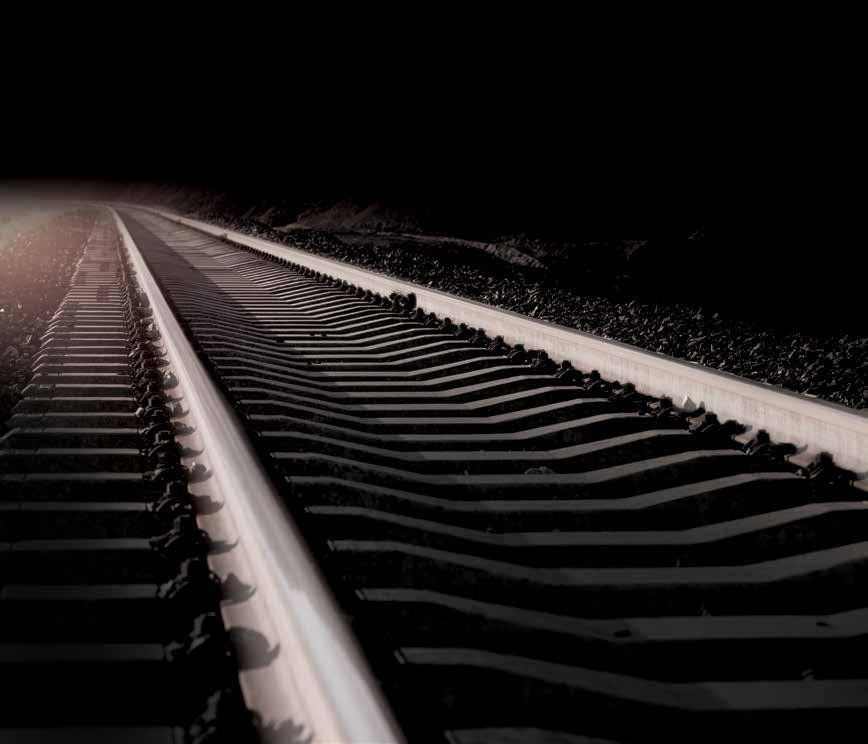

Adani dismisses financial ‘smear campaign’
ASPIRING MINE AND RAIL developer Adani says a harrowing diagnosis from one of Australia’s top forensic accountants is “uninformed” and “inaccurate”, and the company is not at risk of financial ruin. Adani’s proposed Carmichael coal mine and rail project in the Galilee Basin is perhaps the most controversial of its kind in recent history, with a plethora of environmental, economic and employment factors debated in the nation’s newspapers, shouted about in Central Queensland’s oldest towns, and discussed across dinner tables around the nation for more than half a decade.
But all that controversy could be moot, according to Sandra van der Laan, a forensic accountant from the University of Sydney. “[Adani Australia] looks to me like a corporate collapse waiting to happen,” van der Laan told the ABC in late July. “It has all the hallmarks of the big corporate failures we’ve seen over the last 20 to 30 years.”
Van der Laan, one of the few experts who predicted the collapse of childcare major ABC Learning in 2008, told the ABC the “labyrinthian” structure of Adani’s Australian business “seems to be developed to obfuscate or confuse or to hide things”. Her analysis indicated the current assets of Adani Mining, the Australian registered business which reported to ASIC on March 31, were less than $30 million. Current liabilities due over the next 12 months come to more than $1.8 billion, van der Laan said. “Adani Mining is in a very fragile, even perilous, financial position,” she was quoted as saying. “The gap between current assets and liabilities is what’s really concerning. Effectively on paper, they are insolvent. I wouldn’t be trading with them, as simple

Adani challenges reports about its existing financial position.
as that. I wouldn’t have anything to do with them.” Adani on July 24, dismissed the report, and labelled van der Laan’s commentary as “false and misleading”.
“Just like every mining project, our project will not generate income until the mine and rail are built and operating and coal can be sold and exported. Until we start producing and selling coal, we will be continuing to invest in the development of the mine and rail and therefore this will be treated as an accounting loss,” a spokesperson said.
“With Adani’s approvals for construction now in place, construction on the Carmichael mine and rail project is progressing well. The construction stage is due for completion approximately two years after approvals were received, and production of coal will shortly follow.
“The investment in the delivery of the Carmichael Project was always expected to be a long-term investment, which is why Adani has remained committed to the Project.
“Already Adani’s businesses in Australia have had major impacts on the Queensland economy, through its ownership and operation of Abbot Point Port Terminal, Adani Renewables’ solar farm in Rugby Run, and now with the delivery of the Carmichael Project.
“Adani looks forward to continuing its operations and the significant financial contribution it makes to the Australian economy over the coming years.
”We expect anti-coal activists will continue their attempts to discredit and misrepresent our organisation and operations. Despite this, we will deliver our Carmichael Project and the benefits it will bring to regional Queensland communities.”
Adani also criticised the Institute for Economics and Financial Analysis (IEEFA), an advocate for renewable energy development which republished van der Laan’s comments.
“IEEFA is well-known for publishing alarmist papers that attempt to discredit the fossil fuel industry using flawed analysis in order to achieve its state aim of transitioning to renewable energy,” Adani Mining said.
GWA: Port uncertainty, lack of road pricing led to Viterra departure
GENESEE & WYOMING AUSTRALIA says it invested heavily in the Eyre Peninsula rail network prior to the departure of key grain customer Viterra, and has lambasted its unfair disadvantage against road haulage in South Australia.
GWA on July 26 addressed the recent departure of its only Eyre Peninsula regional rail network customer, Viterra, saying much of the “considerable public, political and media discussion … has not been factual in nature”.
Viterra announced in February it would stop using rail because road haulage was the cheaper option.
It said it had worked with GWA on an ongoing deal, but “the condition of the rail infrastructure, the restrictions it placed on operations, and ultimately the cost have all contributed to rail no longer being efficient or cost effective to move grain”.
GWA on Friday rejected the assertion its infrastructure was in poor condition.
“When GWA acquired the regional rail network in SA in 1997 – more than 20 years ago – many of the rail corridors were in poor condition through lack of, or no, customer use, nor adequate maintenance over many years,” a GWA spokesperson said.
“GWA in the period since has spent a very large sum, totalling tens of millions of dollars, upgrading and maintaining the regional rail routes. No more so has this been evident than across the Eyre Peninsula network which has had ongoing, regular custom, albeit supported by a single customer on the grain lines.
“In fact, the greatest amount of GWA’s rail expenditure in regional SA has been on the Eyre Peninsula rail system where GWA has kept the lines operational so that trains can keep running to as recently as May this year.” The company, which operates nearly 5,000 kilometres of track in South Australia and the Northern Territory, said Viterra’s departure from the Eyre Peninsula network was driven by the lack of a proper road pricing policy.
“The cost of operating trucks does not reflect the full cost of maintaining the road network (truck users don’t pay for highway and road upgrades/maintenance), unlike rail,” the GWA spokesperson said.
“Over many years, regional rail in SA has come under constant competition from
trucking which has been allowed to increase significantly in its tonnes capacity to haul.” Additionally, GWA cited the lack of a unified, long-term vision for ports in the region. “Considerable uncertainty has been created recently with numerous Eyre Peninsula port options under development. This has fuelled the inability to attract long-term support for local rail,” the spokesperson argued. “The rail network is dependent on external patronage. Despite years of stakeholder negotiations and engagement with the Government and our customers, unfortunately the decision to move to road has resulted in the cessation of rail use on the Eyre Peninsula. “GWA would like nothing more than to have the Eyre Peninsula rail network attract fresh, economically viable rail traffic. The lines are not closed. However, any further ‘sizeable’ network investment, in the absence of any sufficient and sustainable commercial traffic, would not be commercially viable.” GWA said it remains in regular communication with the SA Government regarding the situation.

Services resume in Adelaide after tram track replacement
REGULAR TRAM SERVICES resumed in Adelaide in late July following major track work for the City South Tramline Replacement Project.
South Australian transport minister Stephan Knoll thanked commuters and motorists for their patience during the partial closure of the network.
During the shutdown crews replaced existing tracks along King William Street, between Victoria Square and South Terrace. The state is also replacing the City South tram stop so it complies with the Disability Discrimination Act. That stop remains closed for now.
“It’s obviously been a frustrating time for commuters and motorists, however these are necessary works to make the City South tram stop DDA compliant, and replace the existing tram tracks between Victoria Square
and South Terrace, which were constructed in the early 1980s and reaching the end of their useful life,” Knoll said on July 24.
“This project will also reduce delays to current tram operations and improve the safety along King William Street for both road and tram users.
“This section of the track was the only remaining shared tram corridor in Adelaide’s CBD.”
The project means trams will now have their own dedicated corridor along this section of King William Street.
“This project adds to the growing list of measures the Marshall Government is delivering to improve our public transport network including building the Flinders Link project, new Park ‘n’ Rides along the O-Bahn and the Gawler line electrification project,” Minister Knoll concluded.

The project looks to reduce delays to current tram operations and improve safety along King William Street according to Minister Knoll.

BEACON ENERGY SOLUTIONS HAVE PARTNERED WITH SONARAY We’ve joined forces to provide our clients with sustainable industry solutions including LED lighting upgrades, solar system design and installation and HVAC improvements. Call us today to discuss your energy requirements.
Don’t miss an issue, subscribe today. railexpress.com.au/subscribe

SPECIAL FEATURE: Condition Monitoring – SEE PAGE 25
ISSUE 6 | 2019
Bigger, stronger, faster: CRRC optimising rail wagon designs - SEE PAGE 20
Rail fighting for fair go on freight PAGE 8
SUPPORTED BY: Light rail rolls down George Street PAGE 11
Q&A with Bombardier’s Wendy McMillan PAGE 53
ISSUE 5 | 2019
Bringing the World to the West RISSB to host global safety event - See Page 30
Aldridge’s innovative level crossing solution PAGE 32
SUPPORTED BY: Funding for Sydney Metro West PAGE 16
Adelaide Metro to go private PAGE 23
RAIL EXPRESS is compulsory reading and a vital tool for all people working in and around the rail sector.
Rail Express is Australia’s authoritative business to business rail publication.
Combining the resources of our respected journalism team and our unparalleled industry contacts and affiliations, Rail Express provides extensive, comprehensive and balanced coverage of breaking news and trends in key areas like infrastructure, investment, government policy, regulatory issues and technical innovation.
Published both in print and digitally every second month, the Rail Express magazine is the only publication to have both the official endorsement and active participation of the main railway associations in Australia and the broad support of the rail industry.
The only way to ensure you get every copy of Rail Express is to subscribe today. Visit railexpress.com.au/subscribe.
Grants offered to SMEs for Metronet railcar program
PERTH BUSINESSES WILL BE offered grants up to $20,000 to help them take part in the upcoming $1.6 billion Metronet railcar program.
The state government said on July 26 it would provide grants to qualifying small- to medium-sized businesses to help them meet essential pre-qualification requirements, and purchase and upgrade essential equipment to be a part of the local manufacturing process. The grants process will begin once a bidder is selected from three shortlisted proponents for the contract.
Alstom; a joint venture of CAF and UGL; and a joint venture of EDI Rail and Bombardier are competing to deliver the Metronet rollingstock contract.
The contract demands local construction of 246 new railcars: 17 six-car sets to service new rail projects under the state’s Metronet

banner, and another 24 six-car sets to replace the Perth network’s aging A-series fleet.
Once the winning bidder is selected,
local SMEs will be able to apply for the supply chain grants through WA Industry Link.
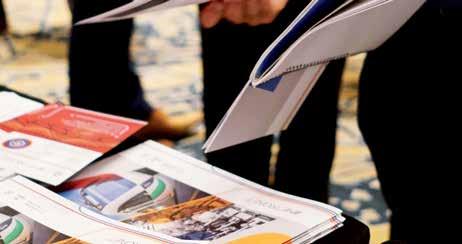
The grants process will begin once a bidder is selected from the shortlisted proponents for the contract.
As a leading engineering and consulting company in the rail sector, we offer sustainable, made-to-measure mobility and transport solutions. From light rail to high-speed traffic, from industrial railway to complex logistics concepts – as a full-service provider we take care of consulting, design and realization, from the idea to operations. No matter what challenges you face – we will find the best solution. We always keep the goal in mind: to make your project a success.











